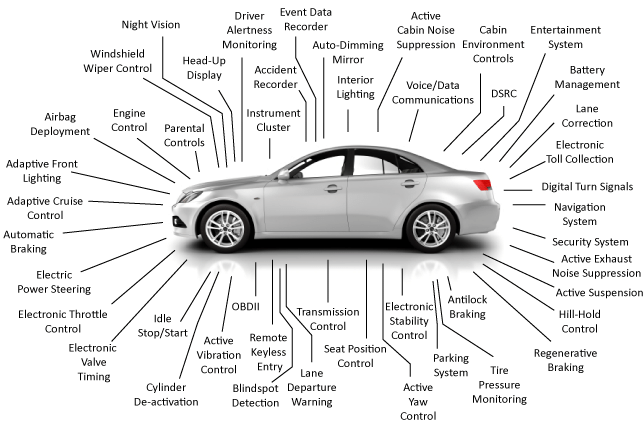The automotive industry has come a long way from the rudimentary vehicles of the past. Today, technology has fused with automotive design to create smart cars equipped with features that prioritize safety, providing drivers with a more secure and comfortable driving experience. Let's delve into how these intelligent features keep you safe on the road.
1. Adaptive Cruise Control (ACC)
While traditional cruise control keeps your car at a steady speed, ACC goes a step further. It uses sensors and cameras to monitor traffic ahead and adjust your speed accordingly. If the car in front slows down, your vehicle will slow down too, ensuring a safe following distance.
2. Lane Departure Warning and Lane Keep Assist
Drifting out of your lane can lead to serious accidents. These systems monitor lane markings and alert the driver if they start to drift out of their lane without signaling. Some advanced systems will even gently steer the car back into its lane.
3. Automatic Emergency Braking (AEB)
This life-saving feature can detect an impending collision and automatically apply the brakes if the driver doesn't act in time. It’s particularly beneficial for reducing the severity of rear-end collisions.
4. Blind-Spot Detection
Every vehicle has blind spots that can make changing lanes a risk. This feature alerts drivers when another vehicle enters those blind spots, either through a light on the side mirror or an auditory signal.
5. Rear Cross-Traffic Alert
When reversing out of a parking spot, this feature warns drivers of approaching vehicles that might not be visible in the rearview mirror, reducing the risk of collisions.
6. Parking Assist
For many, parallel parking can be a daunting task. Parking assist systems guide drivers with visual and auditory signals, and some advanced versions can even take over steering to perfectly park the vehicle.
7. Driver Fatigue Alert
Long drives can lead to driver fatigue, a major cause of accidents. These systems monitor drivers for signs of drowsiness, such as erratic steering or prolonged eyelid closure, and suggest taking a break.
8. Connected Mobile Apps
Many modern vehicles come with associated mobile apps that can alert drivers to mechanical issues, remind them to lock their cars, or help them locate their parked vehicle.
9. Traffic Sign Recognition
Using cameras, this system reads and interprets traffic signs, reminding drivers of speed limits or other important road signs.
Wrapping Up
With all these advancements, driving has become significantly safer. However, technology is just a tool. The responsibility for safe driving ultimately lies with the driver. Understanding the functionality and limitations of these features is crucial.
For those keen on understanding the dynamics of modern driving, online courses can provide invaluable insights. To get started with comprehensive courses tailored for today’s roads, visit https://getdriversed.com/courses. Equip yourself with the knowledge to complement the technology in your vehicle, ensuring a safer drive every time.


